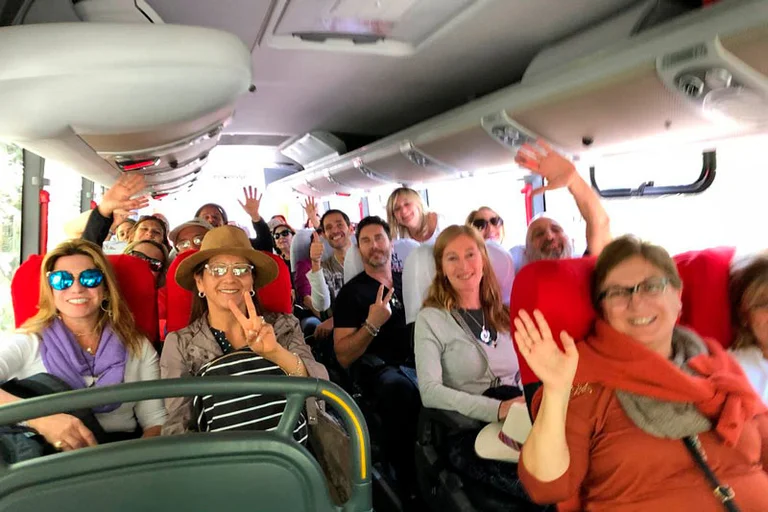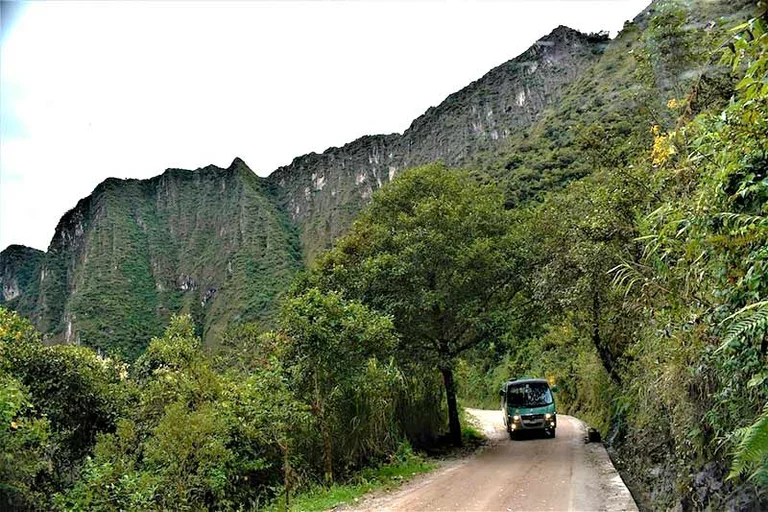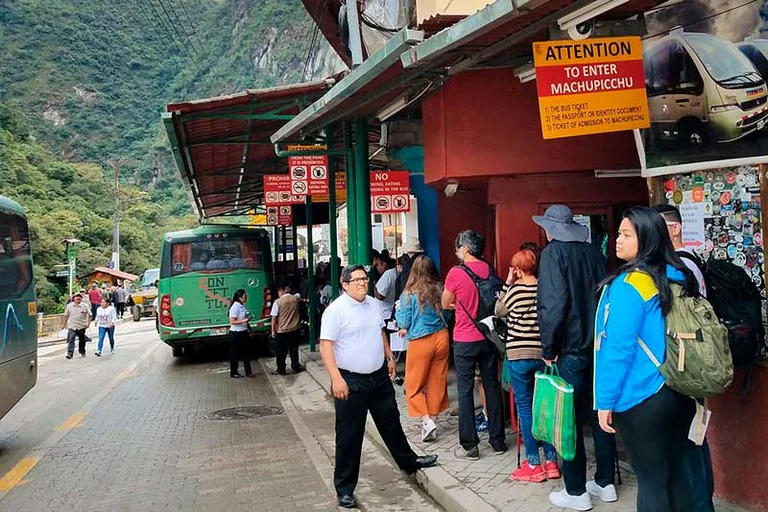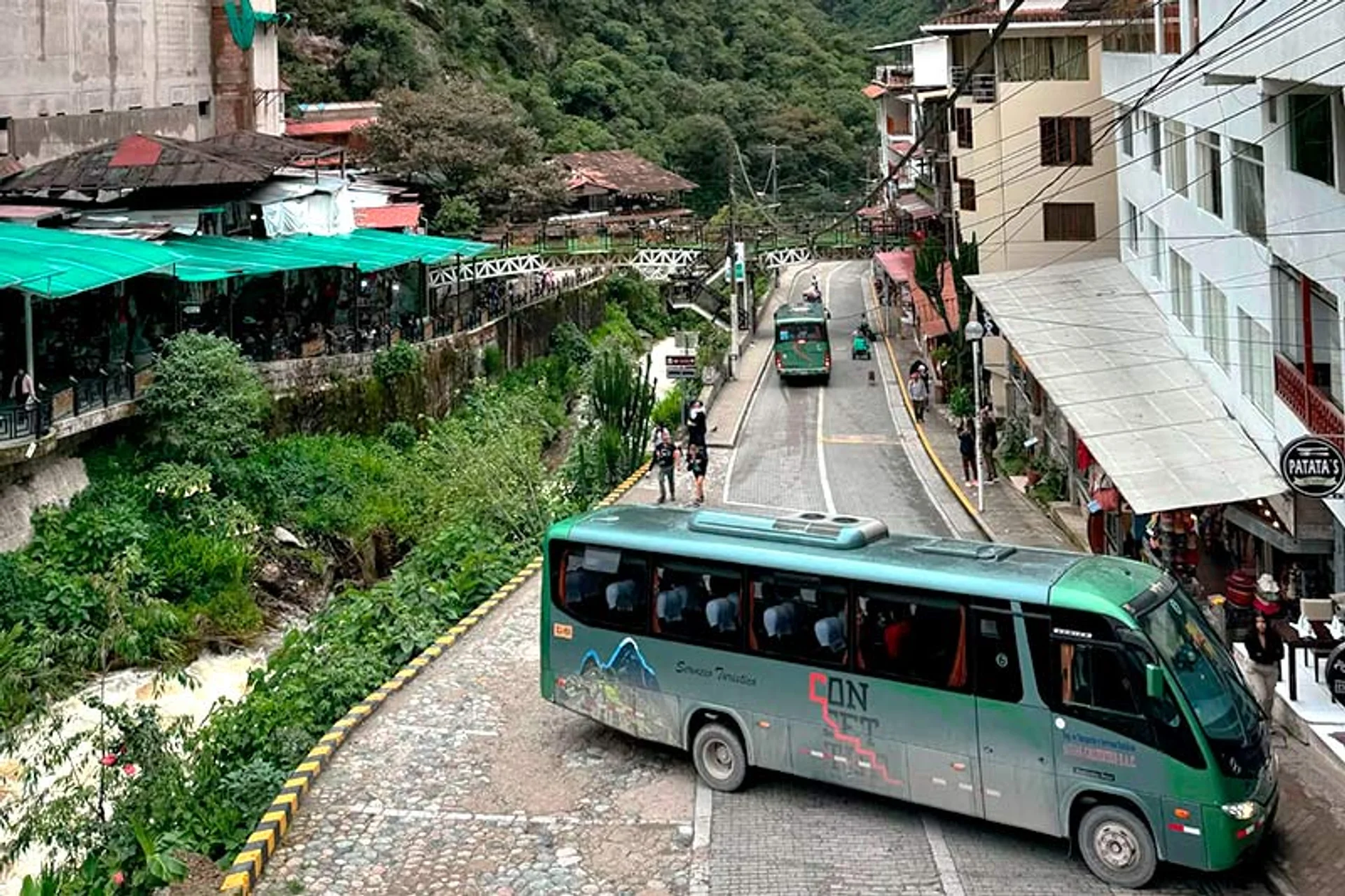Eco-friendly buses on your trip to Machu Picchu
The development of eco-friendly buses on the route between Aguas Calientes and Machu Picchu represents a conscious response to the need to modernize transportation in an area of high cultural and natural value. In the context of growing sustainable tourism, adopting mobility alternatives that minimize the ecological footprint is essential, and the introduction of these buses represents a significant step toward balancing tourist flow with the conservation of natural and cultural heritage.

Content
- Ecotourism
- Traveler’s Experience
- Environmental Impact
- Comparison of Eco-Friendly and Traditional Buses
- Future Perspectives
- What Are the Schedules and Travel Times for the Eco-Friendly Bus to Machu Picchu?
- Frequently Asked Questions
The route connecting Aguas Calientes to Machu Picchu has traditionally been traveled using conventional means of transportation that, while fulfilling the basic function of transporting visitors, have limitations in terms of efficiency and environmental sustainability. Since the early 20th century, vehicles with gasoline or diesel engines have been used, which in many cases have contributed to the deterioration of air quality in an area that harbors sensitive ecosystems. Today, with the growing global concern for protecting the planet and preserving Machu Picchu (a UNESCO World Heritage site), authorities and companies have decided to modernize transportation. Therefore, electric and hybrid vehicles have been introduced, which pollute less and consume less energy. This change aims to protect the environment and make tourism more sustainable.
Sustainable Practices
When visiting Machu Picchu, remember that every choice you make impacts this ecosystem. Choosing responsible practices, such as reducing waste, avoiding single-use plastics, staying on designated trails, and supporting local businesses, enriches your experience and ensures this heritage endures. Prioritize activities that minimize environmental and cultural damage: walk, reuse, and appreciate nature without altering it.
Ecological Tourism
The technology applied in the eco-friendly buses operating between Aguas Calientes and Machu Picchu is based on the use of electric motors and hybrid systems that integrate alternative fuels. Their implementation not only meets environmental requirements but is also part of a modernization strategy aimed at optimizing mobility on a route of such great tourist and cultural importance. The most relevant technical and ecological features include:
- Electric and/or hybrid engines: The systems are designed to minimize fossil fuel use, resulting in cleaner and quieter operation.
- Emissions reduction: Comparative studies indicate that these buses achieve up to a 70% reduction in CO₂ emissions compared to traditional vehicles, significantly improving air quality in the area.
- Regulations and maintenance: The operation of these vehicles is regulated by international and local environmental and safety standards, and rigorous maintenance is carried out to ensure system efficiency.
The implementation of this technology not only meets environmental requirements but is also part of a modernization strategy aimed at optimizing mobility on a route of such great tourist and cultural importance.
The Traveler Experience

The impact of the introduction of eco-friendly buses on the traveler experience is reflected in improvements in both comfort and service quality. The vehicles are designed with a practical approach, prioritizing functionality and comfort.
- Onboard services: The seats are designed to provide greater comfort during the journey, while the interior space is optimized to ensure safety and accessibility for all passengers. Additionally, heating systems, Wi-Fi connection, and information screens providing relevant data about the route and surroundings have been installed.
- Customer service: During the trip, technical and tourist information is provided, making it easier to understand the operation of eco-friendly buses and the historical and natural context of Machu Picchu.
- Safety and punctuality: Punctuality and service organization help reduce wait times and improve itinerary coordination, essential aspects for a smooth trip.
Environmental Impact

One of the main objectives of implementing eco-friendly buses is to reduce the environmental impact generated by conventional transportation in an ecologically sensitive area. The adoption of low-emission technologies helps minimize air and noise pollution, which directly affects the conservation of ecosystems and the health of the local population. The reduction of pollutants supports the preservation of protected areas and ecosystems surrounding Machu Picchu, minimizing the impact on native flora and fauna.
The implementation of this transportation system has been developed in collaboration with local initiatives and corporate social responsibility programs, which include reforestation projects, air quality monitoring, and awareness campaigns on the importance of sustainable tourism.
Comparison of Eco-Friendly and Traditional Buses
|
Feature
|
Eco-Friendly Buses
|
Traditional Buses
|
|---|---|---|
|
Propulsion
|
They use electric or hybrid engines, with fuels that allow low or zero emission operation.
|
They run on diesel or gasoline engines, which generate CO₂ emissions.
|
|
Efficiency
|
High energy efficiency thanks to consumption optimization systems, leading to more rational energy use.
|
Lower energy efficiency, with an operation highly dependent on fuels.
|
|
Environmental Impact
|
They contribute to a significant reduction in CO₂ and other pollutant emissions, improving air quality and conserving ecosystems.
|
They generate high levels of pollutant emissions, negatively impacting air quality and potentially accelerating environmental degradation.
|
|
Onboard Services
|
They offer improvements such as ergonomic seats, heating systems, Wi-Fi connection, and informational screens.
|
Generally provide basic comfort and limited services, without the integration of technological systems.
|
|
Long-Term Costs
|
Although they require a high initial investment, they offer lower operational costs in the medium and long term in fuel and maintenance.
|
They have lower initial costs, but operating expenses are higher due to continuous fuel consumption and more intensive maintenance.
|
Future Perspectives
The future of eco-friendly transportation on routes like Aguas Calientes-Machu Picchu aims to use more electric buses and clean energy, improving what has already begun. If the infrastructure and the current system work well, more eco-friendly vehicles could be added and applied to other tourist routes.
For this to work, it is essential that governments, companies, and organizations work together. Their goal should be not only to reduce pollution but also to handle the increase in tourists without harming nature. This model is very important because it is based on global trends, where clean, efficient, and high-quality transportation is a priority. What is currently a trial in Machu Picchu could become the model for preserving other unique sites in the future.
Tip for Visitors
If you are looking for an authentic and enriching experience, walk the path from Aguas Calientes to Machu Picchu. This journey (approximately 2 hours) will allow you to connect with the nature of the mountainous jungle, hear the murmur of the Urubamba River, and feel the magic of the path once traveled by the ancient Incas. Wear comfortable shoes, bring plenty of water, a raincoat for possible showers, and start early to arrive at Machu Picchu at sunrise. Although the hike is somewhat demanding, every step is worth it for a trip full of history and adventure.
What Are the Schedules and Travel Times for the Eco-Friendly Bus to Machu Picchu?

The bus service from Aguas Calientes to Machu Picchu is designed to be flexible and efficient. Every 10 minutes, starting at 5:30 AM, buses depart, allowing visitors to reach the archaeological site without long waits. This high frequency is ideal for avoiding crowds and ensuring visitors are evenly distributed throughout the morning, optimizing their experience. The travel time is 30 minutes, allowing you to enjoy beautiful landscapes while waiting to arrive at the citadel.
The advantage of this system is that there are no fixed schedules. With your ticket (which you must purchase in advance through our website), you can board the first available bus at your preferred time. This is especially useful for those who want to be among the first to enter the sanctuary or for those who prefer to start the day at a more relaxed pace. However, keep in mind that the last bus to Machu Picchu departs at 3:30 PM.
